As you consider the limitations of traditional classrooms, you may find yourself wondering: what if learning didn't have to be confined to four walls? Outdoor learning spaces offer a fresh approach, where students can engage with the world around them in meaningful ways. By incorporating natural environments, hands-on activities, and interdisciplinary exploration, you can create an immersive learning experience that sparks curiosity and creativity. But what does this look like in practice? How can you effectively design and implement an outdoor learning space that truly inspires students?
Whimsical Nature Play Areas

As you design a whimsical nature play area, incorporate natural elements and fantastical features that invite children to explore, imagine, and learn in a space that blurs the lines between reality and fantasy.
Consider creating fairy gardens, complete with miniature plants, winding paths, and intricately designed bridges. These tiny oases will transport kids to a world of wonder, encouraging them to tend to the environment and appreciate the beauty of nature.
To further spark imagination, introduce mythical creatures like dragons, unicorns, or mermaids through sculptures, mosaics, or murals.
These whimsical additions will inspire creative play and storytelling, as kids weave tales around the magical inhabitants of their outdoor world.
Be mindful of spatial awareness, ensuring that each feature flows seamlessly into the next, creating a sense of continuity and harmony.
Outdoor STEM Exploration Zones
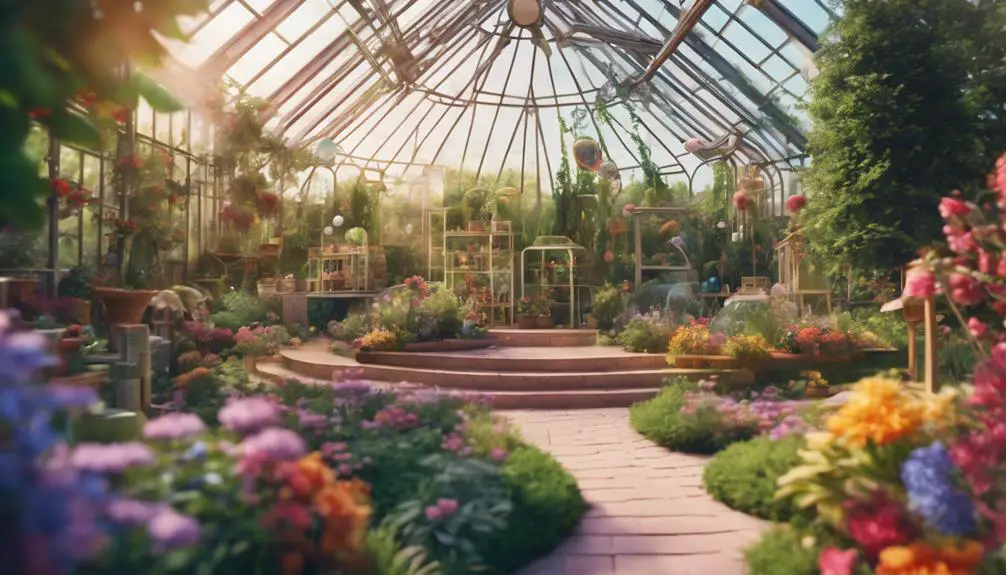
By incorporating intentional design elements and interactive tools, you can craft outdoor STEM exploration zones that encourage kids to investigate, experiment, and problem-solve in a hands-on, nature-based environment.
These zones should be designed to spark curiosity and creativity, allowing students to explore and learn through real-world applications.
Consider incorporating STEM Challenges, such as building birdhouses or creating wind-resistant structures, to encourage critical thinking and collaboration.
Science Expeditions can also be designed to explore the natural world, such as studying the water cycle or observing the local wildlife.
To create a visually appealing space, incorporate natural materials, such as wood and stone, and consider adding interactive features like sensory gardens or outdoor math installations.
Eco-Friendly Classroom Extensions
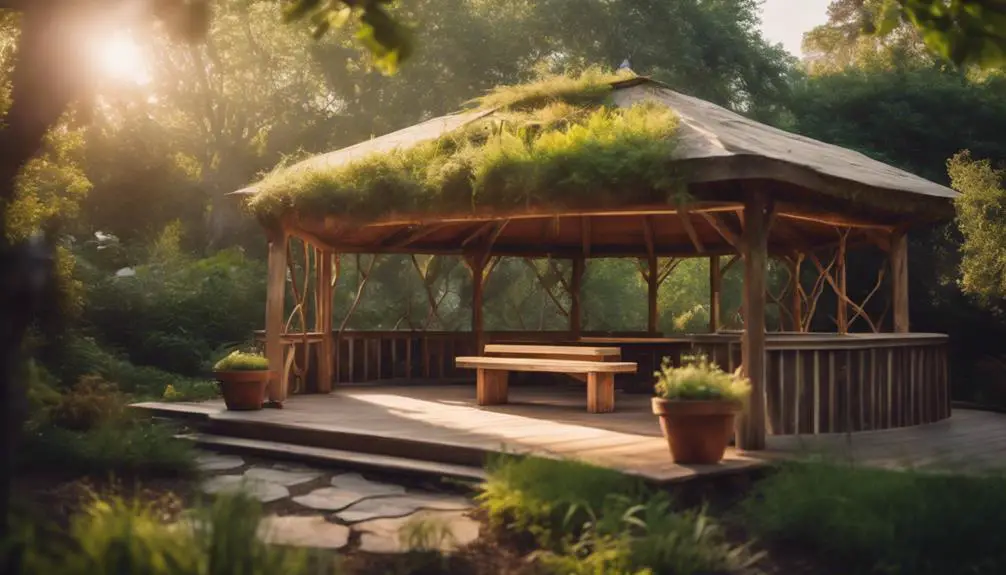
How can you extend the traditional classroom into the great outdoors while minimizing your ecological footprint?
By incorporating eco-friendly classroom extensions, you can create an immersive learning environment that not only benefits your students but also the planet.
Consider sustainable buildings made from recycled materials, such as reclaimed wood or repurposed shipping containers, to reduce waste and conserve resources.
These structures can be designed to blend seamlessly into the natural surroundings, providing an organic and inspiring space for learning.
As you plan your outdoor classroom extension, think about incorporating natural elements, like living walls or green roofs, to create a symbiotic relationship between the built environment and nature.
This not only enhances the aesthetic appeal but also provides opportunities for hands-on learning about sustainability and environmental stewardship.
Nature-Based Art Studios
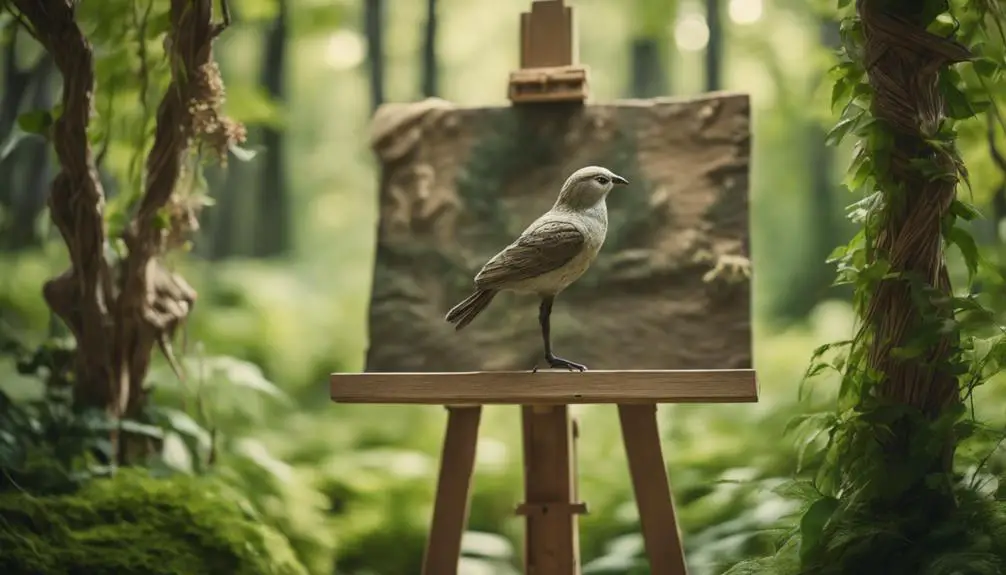
What if you could unfurl your students' creativity amidst the beauty of nature, where petals inspire paintings and leaves inform landscapes?
A nature-based art studio is an outdoor learning space that fosters creativity and connection with the environment. Imagine a shaded area with natural materials like logs, rocks, and plants, inviting students to explore and express themselves.
You can create an art habitat by incorporating natural elements like a living wall or a green roof, providing a unique canvas for students to paint and explore.
Nature journals can become an essential tool for students to record their observations, sketches, and poetry, encouraging them to slow down and appreciate the intricate details of nature.
The outdoor setting also allows for collaborative projects, like a community mural or a sculpture garden, promoting teamwork and environmental awareness.
Outdoor Music and Movement Spaces
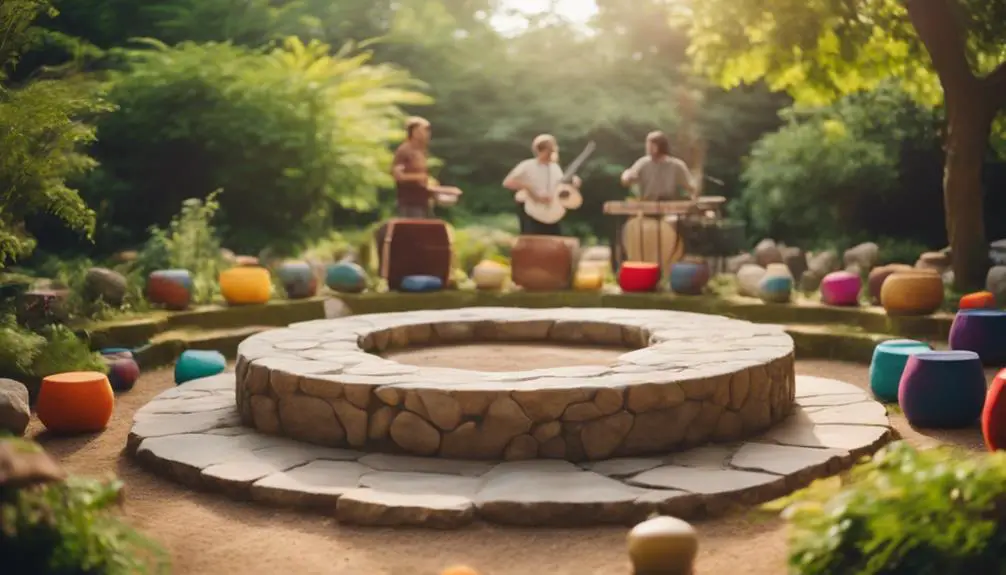
As you design your outdoor music and movement space, imagine creating distinct areas that spark creativity and energy.
You'll want to incorporate Rhythm and Beat Areas where kids can tap out a beat on natural instruments, Movement Exploration Zones that encourage fluid motion, and Instrument Play Stations that invite experimentation with sound.
Rhythm and Beat Areas
Incorporating outdoor music and movement spaces into your outdoor learning environment, you can create vibrant Rhythm and Beat Areas that invite children to explore the intersection of sound and motion amidst nature's rhythms.
These spaces can be designed to mimic the natural world, with instruments and materials that blend seamlessly into the surroundings. For instance, you can incorporate natural materials like logs, rocks, and plants to create a visually appealing space that inspires creativity.
In your Rhythm and Beat Area, consider incorporating various Rhythm Instruments, such as chimes, drums, and xylophones, that allow children to experiment with Beat Patterns and create their own unique sounds.
You can also add movement elements, like dance floors or mazes, that encourage kids to move their bodies in time with the rhythm.
As children explore and engage with these spaces, they'll develop their sense of creativity, coordination, and self-expression. By integrating music and movement into your outdoor learning space, you'll create an immersive and engaging environment that fosters a deeper connection with nature and promotes overall well-being.
Movement Exploration Zones
You'll create a dynamic Movement Exploration Zone by designing a series of interconnected spaces that encourage children to explore, experiment, and express themselves through movement, ultimately blurring the lines between music, dance, and play.
These zones should be designed with Body Awareness in mind, incorporating features that promote flexibility, balance, and coordination. Incorporate natural elements like hills, mounds, or logs to create an obstacle course that challenges kids to navigate through the space.
Consider incorporating mirrors or reflective surfaces to foster Spatial Awareness, allowing children to observe their movements and develop a sense of self-awareness.
You can also incorporate sensory elements like textured pathways, wind chimes, or water features to create a multisensory experience.
To encourage experimentation, incorporate loose parts like scarves, ribbons, or fabric that can be used to create impromptu dance performances.
Instrument Play Stations
Now that you've ignited a passion for movement and exploration, it's time to strike a chord with Instrument Play Stations that harmonize music and motion in the outdoor learning space.
These dynamic areas encourage sound exploration and instrument discovery, fostering a deeper connection between children and the environment. By incorporating natural elements, such as wooden or bamboo instruments, you'll create a unique soundscape that resonates with the outdoors.
Consider incorporating a variety of instruments, like chimes, drums, or xylophones, that cater to different learning styles and abilities.
As children experiment with sounds and rhythms, they'll develop their auditory skills and creativity. You can also incorporate movement opportunities, like dance floors or mallet-activated instruments, to get kids moving and grooving while exploring sound.
To maximize the Instrument Play Station's potential, consider its placement within the outdoor learning space.
Position it near a natural amphitheater or under a shaded canopy to create an immersive experience. By thoughtfully designing this space, you'll create an outdoor music and movement haven that inspires creativity, curiosity, and a love for learning.
Environmental Science Labs
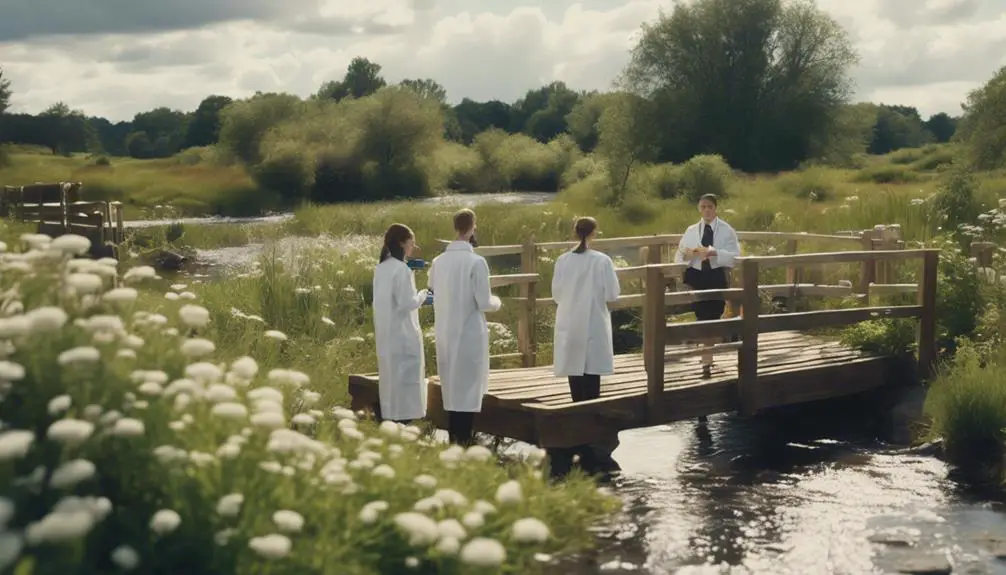
As you step into the outdoor environmental science lab, the sights, sounds, and smells of nature surround you, immersing you in a hands-on learning experience that simulates real-world ecosystems and encourages exploration of the interconnectedness of our planet.
You're surrounded by diverse wildlife habitats, each carefully designed to mimic the natural environments of various species. You observe the intricate relationships between organisms and their habitats, sparking curiosity about the delicate balance of our ecosystem.
As you plunge deeper, you're drawn to the water quality station, where you collect and analyze water samples, exploring the impact of human activities on aquatic ecosystems.
You learn about the importance of conservation and sustainable practices, understanding how individual actions can affect the health of our planet.
The outdoor environmental science lab is a dynamic, interactive space that fosters a deep appreciation for the natural world and inspires you to become an active steward of the environment.
Imaginative Play Grounds
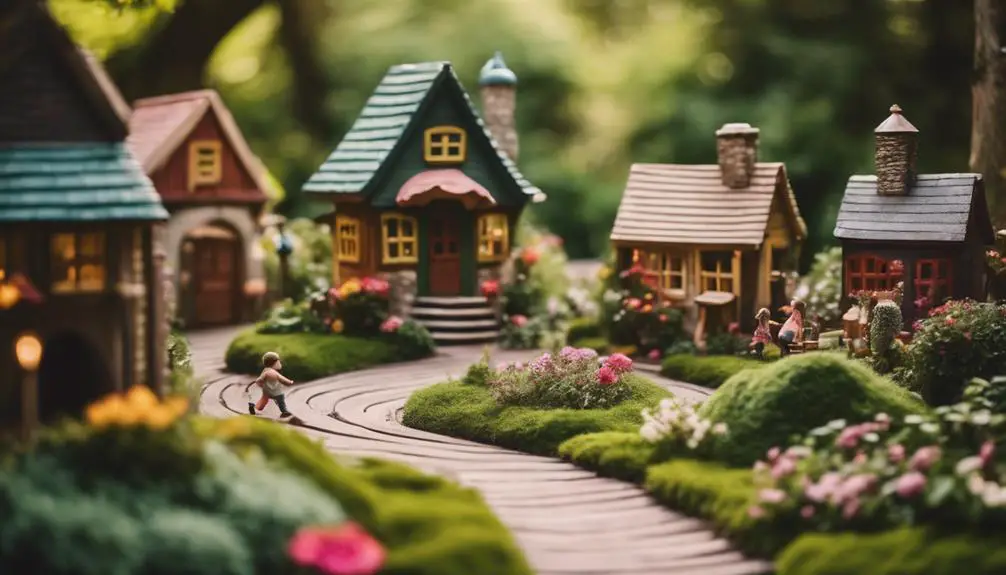
Beyond the boundaries of the environmental science lab, a vibrant oasis awaits, where imagination runs wild and creativity knows no bounds in the imaginative play grounds.
In these imaginative play grounds, you'll design fantasy landscapes that transport students to new worlds, sparking curiosity and creativity. Incorporate natural materials like logs, rocks, and plants to create an immersive environment that blurs the line between reality and fantasy.
In these adventure zones, students become the protagonists of their own stories, charting a course through challenges, and solving problems. You can incorporate sensory-rich elements like water features, soundscapes, and tactile materials to engage students on multiple levels.
Consider incorporating movable parts, like modular blocks or fabric canopies, to encourage students to experiment and adapt their surroundings.
As you design your imaginative play grounds, remember to balance structure and freedom, providing just enough guidance to spark imagination while allowing students to take the reins.
Community Garden Projects
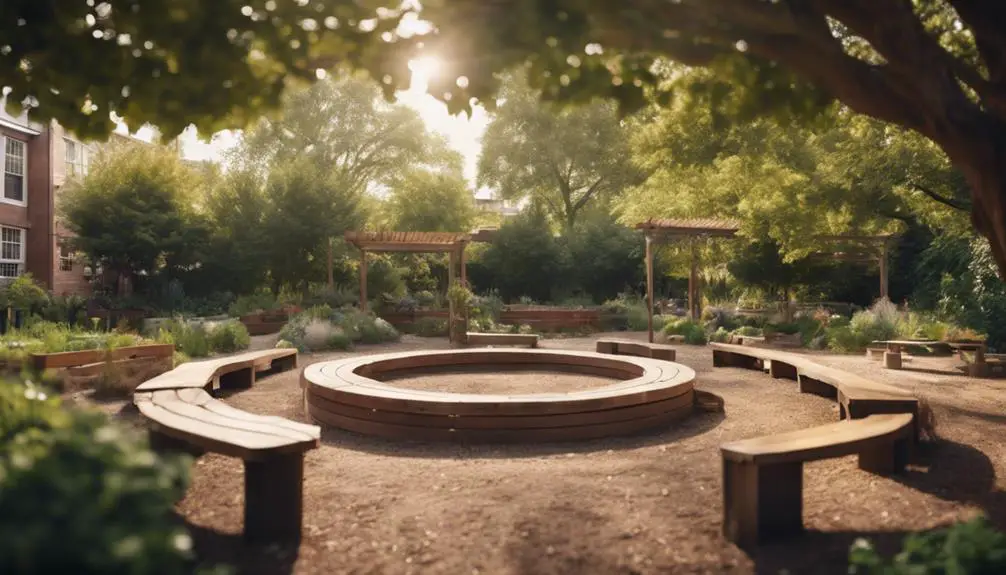
As you envision a community garden project, you're likely thinking about the garden design elements that will bring your outdoor learning space to life.
You'll want to ponder the layout, plant selection, and accessibility features that will make your garden an inviting and functional space for students.
Garden Design Elements
You'll want to incorporate a mix of functional and aesthetic garden design elements into your community garden project to create an inviting and productive outdoor space.
Botanical accents like native plants, flowers, and trees will add color, texture, and fragrance to your garden, while also supporting local ecosystems. Consider incorporating drought-tolerant plants to reduce water consumption and maintenance.
Hardscape features like pathways, benches, and raised beds will define different areas of the garden and create a sense of flow.
Use sustainable materials like recycled wood, stone, or permeable pavers to reduce your environmental footprint. Incorporate seating areas and gathering spaces to encourage social interaction and community building.
Consider adding a focal point, like a water feature or sculpture, to create visual interest and draw visitors in.
Growing Fresh Produce
By incorporating a community garden project focused on growing fresh produce, you can turn your outdoor learning space into a hands-on laboratory where students can cultivate their own fruits and vegetables, exploring the entire food cycle from seed to table.
This interactive space allows students to get their hands dirty, learning about the importance of sustainable farming practices, crop rotation, and the impact of seasonal changes on plant growth.
You can designate areas for specific crops, such as a herb garden featuring fresh herbs like basil, mint, and cilantro, or a section for seasonal crops like tomatoes, peppers, and squash.
Incorporating raised beds, trellises, and vertical planters can maximize space and add visual interest.
As students nurture their crops, they'll develop essential skills in science, math, and problem-solving while fostering a deeper appreciation for the environment and the food they eat.
Outdoor Literacy Nooks
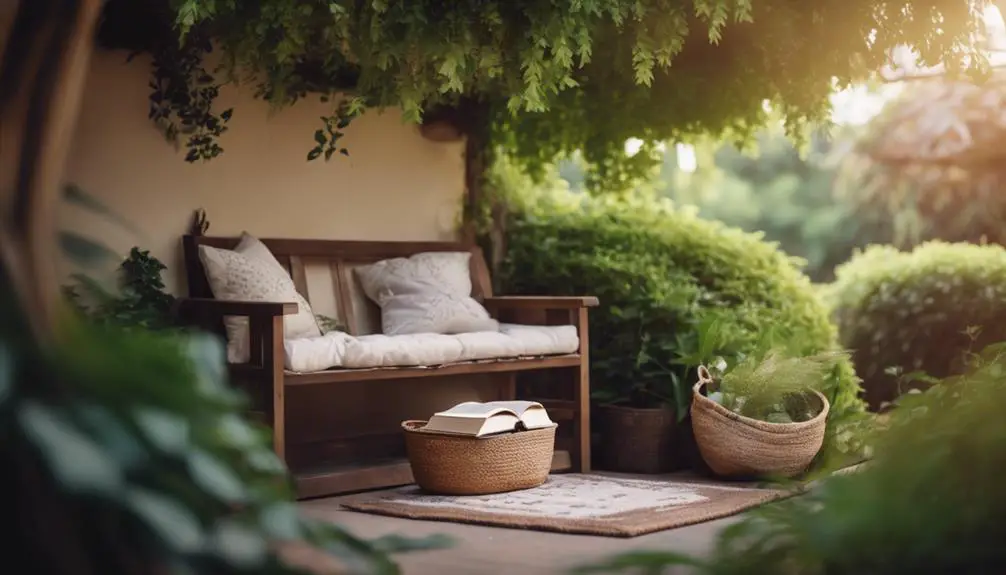
Create inviting outdoor literacy nooks by transforming corners of your yard or school grounds into cozy, nature-inspired reading retreats.
You can repurpose an old tree stump into a book nook, or design a circular seating area around a majestic oak tree. Add plush cushions, pillows, and a few favorite books to create a snug atmosphere.
Consider building an outdoor library with a living roof, where plants and flowers bloom above your head as you read.
Incorporate natural elements, like a babbling brook or a bird's-eye view, to stimulate young minds.
Use reclaimed wood and eco-friendly materials to create a sustainable and environmentally conscious space. Add some soft lighting, and you'll have a magical spot that fosters a love for reading and learning.
As you design your outdoor literacy nook, think about the flow of space and how it will be used. Will it be a quiet, solo reading spot or a collaborative space for group discussions?
Weather and Climate Stations

As you design your outdoor learning space, you're probably thinking about how to make it a hub for environmental exploration.
By incorporating weather and climate stations, you'll create an immersive experience that lets students observe and record real-time data on rainfall, temperature, and climate zones.
This hands-on approach will help them develop a deeper understanding of the complex relationships between weather patterns and their local ecosystem.
Rainfall Data Collection
You'll transform your outdoor learning space into a hands-on weather lab by installing a rainfall data collection system, which will allow students to track and analyze precipitation patterns.
This innovative setup will enable your students to collect valuable data on rainfall amounts, frequency, and intensity, sparking curiosity and encouraging hands-on exploration.
A well-designed rain gauge is vital for accurate data collection. Consider a gauge with a large collection surface and a sturdy, weather-resistant design.
Once you've collected the data, it's time to delve into analysis. Teach your students various data analysis techniques, such as graphing and charting, to help them identify trends and patterns.
This will enable them to draw meaningful conclusions about the impact of rainfall on the environment and local ecosystems.
Temperature Tracking Tools
Two weather and climate stations, strategically positioned in your outdoor learning space, will empower students to track temperature fluctuations and explore the intricate relationships between weather patterns and the local ecosystem.
By monitoring temperature changes, students can analyze how they impact plant growth, animal behavior, and even human comfort levels. Weather sensors, equipped with temperature probes, provide accurate and real-time data, allowing students to visualize the data and make connections between temperature and other environmental factors.
As students navigate the outdoor learning space, they'll develop a deeper understanding of microclimates and how temperature variations affect the local environment.
By comparing data from different stations, students can identify patterns and anomalies, fostering critical thinking and problem-solving skills. The data can also be used to inform decisions about outdoor activities, such as scheduling outdoor lessons during ideal temperature ranges or planning shade structures to mitigate extreme temperatures.
Climate Zone Exploration
By positioning weather and climate stations in different climate zones within your outdoor learning space, you can create a dynamic exploration area that lets students compare and contrast local microclimates.
This hands-on approach allows kids to observe and record data on temperature, humidity, and precipitation patterns in various environments. Imagine having a desert landscape station, where students can monitor the scorching temperatures and low humidity, and a tropical region station, where they can track the high temperatures and humidity levels.
As students rotate through the stations, they'll develop a deeper understanding of how climate zones differ and how these differences impact local ecosystems.
You can enhance the experience by incorporating interactive elements, such as weather maps, climate graphs, and data analysis tools. This will enable students to visualize and analyze the data they've collected, making connections between climate and the natural world.
Wildlife Observation Decks
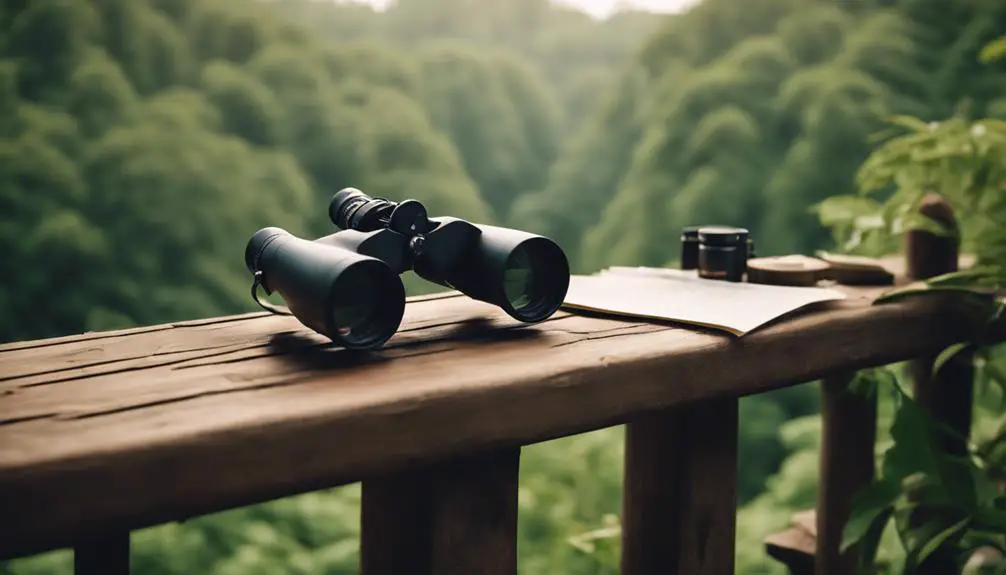
Perched among the treetops or cantilevered over a tranquil pond, wildlife observation decks invite students to step into the natural world and get up close and personal with the fascinating creatures that inhabit it.
You'll find yourself surrounded by the sights and sounds of nature, with birds flitting between branches and fish swimming beneath your feet. As you observe the wildlife, you'll develop a deeper appreciation for habitat preservation and the importance of protecting these delicate ecosystems.
Bird watching becomes a thrilling adventure as you spot species you've never seen before, and you'll learn to identify their distinct calls and characteristics. The deck's design will encourage you to slow down and observe the intricate relationships between species, fostering a sense of wonder and curiosity.
Outdoor Fitness and Wellness Areas

As you step into the outdoor fitness and wellness area, surrounded by lush greenery and vibrant flowers, you're invited to stretch, move, and breathe in harmony with nature.
The space is thoughtfully designed to encourage physical activity while fostering a connection with the environment. Meandering Fitness Trails guide you through the area, weaving past native plant species and natural landmarks.
As you walk or jog along the trails, you'll pass through designated Calorie Zones, where interactive signs and markers track your progress and provide motivation.
The landscape is carefully crafted to provide shade, shelter, and visual interest, with strategically placed benches and rest areas.
You can pause to stretch or meditate amidst the serene surroundings, taking in the sights and sounds of nature.
The outdoor fitness and wellness area is a holistic space that promotes physical and mental well-being, encouraging you to tune in to your body and the natural world.
Innovative Makerspaces Outdoors
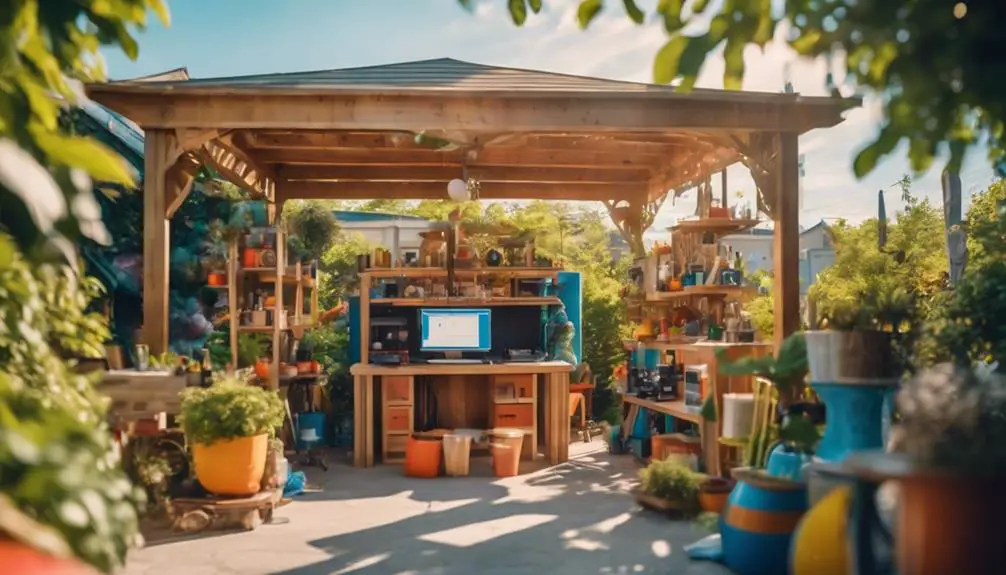
Step into the innovative makerspace outdoors, where natural light and fresh air fuel your creativity as you tinker, build, and bring your projects to life amidst the sights and sounds of nature.
You'll feel invigorated as you work amidst the lush greenery, surrounded by the soothing sounds of birds chirping and leaves rustling.
Imagine having access to a Mobile Fablab, a self-contained workshop on wheels that brings cutting-edge fabrication tools right to your outdoor space.
With Digital Workbenches, you can design and prototype your projects digitally, and then bring them to life using the Fablab's advanced machinery.
The outdoor setting inspires a unique fusion of natural and digital elements, allowing you to push the boundaries of what's possible.
As you work, you'll be surrounded by the beauty of nature, sparking new ideas and insights that mightn't have emerged in a traditional indoor setting.
Get ready to unlock your creativity and bring your most innovative projects to life in this unique outdoor makerspace.
Frequently Asked Questions
How Do I Ensure Outdoor Learning Spaces Are Accessible for All Students?
To create inclusive environments, you'll guarantee accessible pathways and adopt inclusive design principles, considering varied abilities and needs, so everyone can navigate and engage freely in your outdoor spaces.
Can Outdoor Learning Spaces Be Used During Extreme Weather Conditions?
When extreme weather hits, you'll want to guarantee your outdoor space is weather-proofed with climate control features, such as retractable canopies, windbreaks, and heated/cooled flooring, allowing you to adapt and thrive in any condition.
What Is the Ideal Teacher-To-Student Ratio for Outdoor Learning?
You'll want to guarantee the ideal teacher-to-student ratio, considering class size impact on effective supervision and instruction. With proper teacher training needs addressed, you'll create a safe, engaging environment that fosters curiosity and exploration.
How Do I Maintain Safety and Supervision in Outdoor Learning Areas?
You'll guarantee safety by conducting thorough risk assessments and establishing emergency protocols, visually identifying potential hazards, and spatially designing areas to minimize risks, allowing you to focus on innovative learning experiences.
Can Outdoor Learning Spaces Be Adapted for Students With Special Needs?
You can create inclusive spaces that cater to students with special needs by incorporating sensory integration elements and adopting inclusive design principles, ensuring equal access to outdoor learning experiences that stimulate their senses and foster growth.
Conclusion
As you step into these outdoor learning spaces, you're surrounded by the sights, sounds, and textures of nature.
Whimsical play areas and STEM zones ignite curiosity, while eco-friendly extensions and art studios inspire creativity.
Weather stations, wildlife decks, and fitness areas encourage exploration.
Innovative makerspaces and music spaces bring ideas to life.
You're not just learning – you're immersed in an interactive, ever-changing world where boundaries blur and possibilities unfold.




